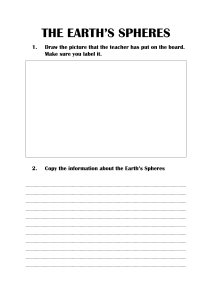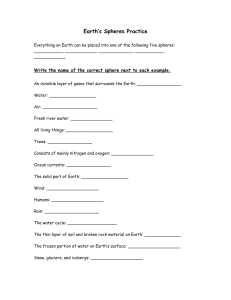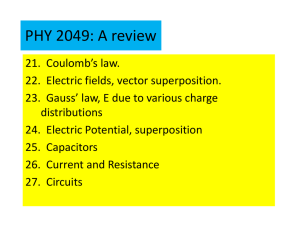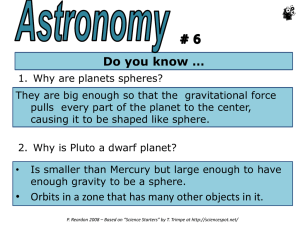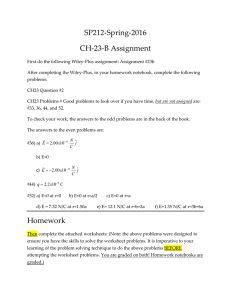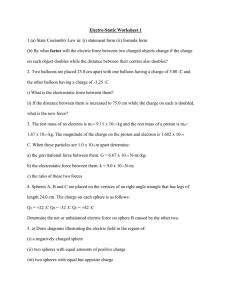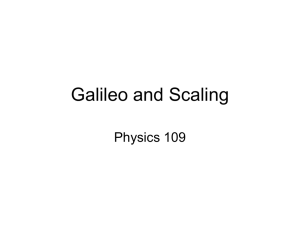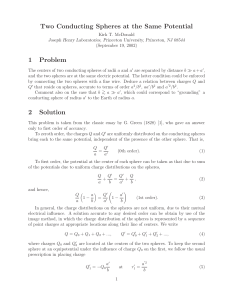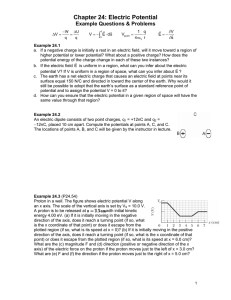Homework 1
advertisement
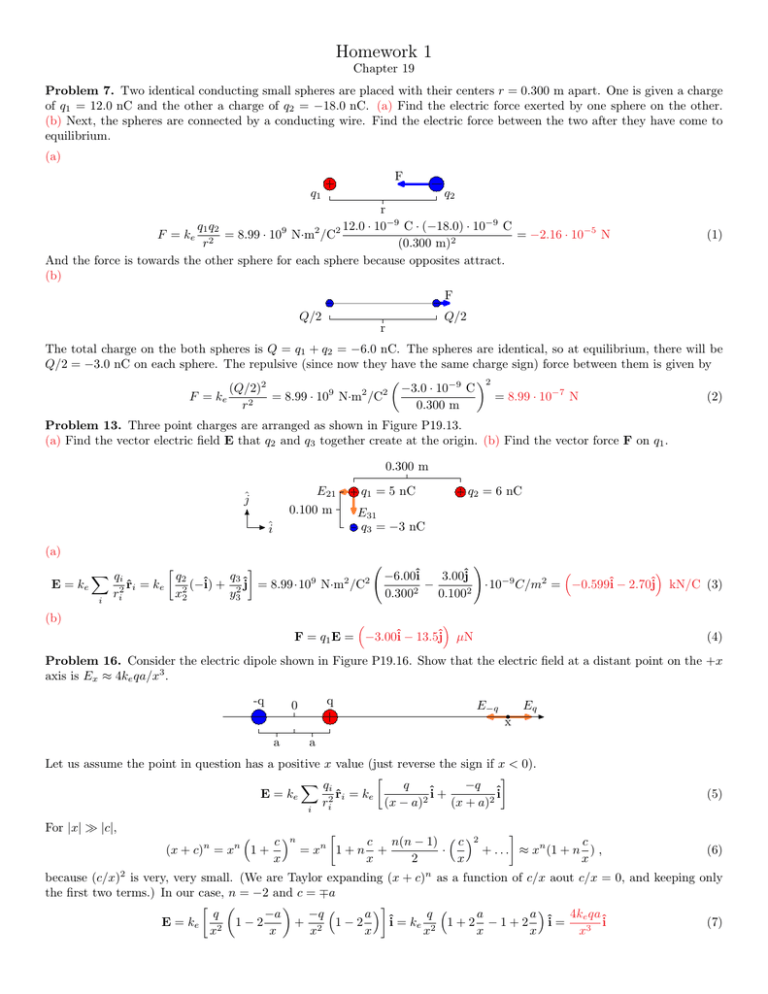
Homework 1 Chapter 19 Problem 7. Two identical conducting small spheres are placed with their centers r = 0.300 m apart. One is given a charge of q1 = 12.0 nC and the other a charge of q2 = −18.0 nC. (a) Find the electric force exerted by one sphere on the other. (b) Next, the spheres are connected by a conducting wire. Find the electric force between the two after they have come to equilibrium. (a) F q1 q2 r q1 q2 12.0 · 10−9 C · (−18.0) · 10−9 C F = ke 2 = 8.99 · 109 N·m2 /C2 = −2.16 · 10−5 N r (0.300 m)2 And the force is towards the other sphere for each sphere because opposites attract. (b) (1) F Q/2 Q/2 r The total charge on the both spheres is Q = q1 + q2 = −6.0 nC. The spheres are identical, so at equilibrium, there will be Q/2 = −3.0 nC on each sphere. The repulsive (since now they have the same charge sign) force between them is given by 2 −3.0 · 10−9 C (Q/2)2 9 2 2 F = ke = 8.99 · 10 N·m /C = 8.99 · 10−7 N (2) r2 0.300 m Problem 13. Three point charges are arranged as shown in Figure P19.13. (a) Find the vector electric field E that q2 and q3 together create at the origin. (b) Find the vector force F on q1 . 0.300 m E21 0.100 m ĵ î q1 = 5 nC q2 = 6 nC E31 q3 = −3 nC (a) X qi q3 q2 9 2 2 E = ke 2 r̂i = ke x2 (−î) + y 2 ĵ = 8.99·10 N·m /C r 2 3 i i 3.00ĵ −6.00î − 2 0.300 0.1002 ! ·10−9 C/m2 = −0.599î − 2.70ĵ kN/C (3) (b) F = q1 E = −3.00î − 13.5ĵ µN (4) Problem 16. Consider the electric dipole shown in Figure P19.16. Show that the electric field at a distant point on the +x axis is Ex ≈ 4ke qa/x3 . -q q 0 E−q Eq x a a Let us assume the point in question has a positive x value (just reverse the sign if x < 0). X qi q −q E = ke r̂i = ke î + î ri2 (x − a)2 (x + a)2 i (5) For |x| |c|, n (x + c) = x n c n c n(n − 1) c 2 c n 1+ =x 1+n + · + . . . ≈ xn (1 + n ) , x x 2 x x (6) because (c/x)2 is very, very small. (We are Taylor expanding (x + c)n as a function of c/x aout c/x = 0, and keeping only the first two terms.) In our case, n = −2 and c = ∓a q −a −q a q a a 4ke qa E = ke 2 1 − 2 + 2 1−2 î = ke 2 1 + 2 − 1 + 2 î = î (7) x x x x x x x x3
